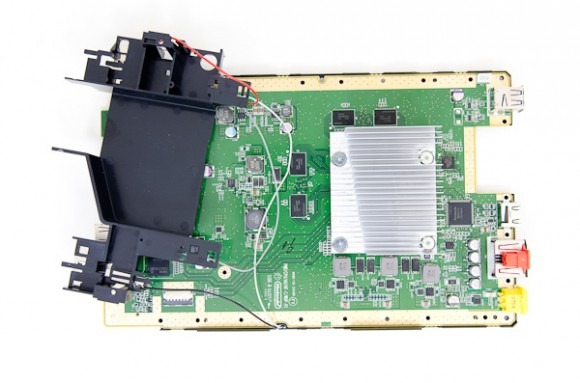Wii U Teardown Reveals Dedicated Miracast For Smooth GamePad Action
Nintendo's Wii U has been giving up some of its hardware secrets, with a post-launch teardown of the next-gen console revealing its advantages over the original Wii as well as how the GamePad controller delivers its magic. Released in the US yesterday, and promptly cracked open by AnandTech, the Wii U appears fairly repair-friendly, with an easy to open chassis only offset by some delicate connections soldered rather than plugged together, but it's the speed improvement over the Wii that many gamers will care about.
Much of that is down to memory bandwidth, and the Wii U's 2GB of DDR3-1600 RAM offers more than double the peak bandwidth of the Wii, at 12.8GB/s. There's also a sizable GPU, considerably larger than the multicore PowerPC processor, which are both – along with a small slice of off-chip memory – hidden under an integrated heat spreader that took a razor blade to remove.
Other tidbits include not one but two wireless controllers, which operate independently. That leaves one for regular WiFi b/g/n duties, and a second, dedicated Miracast 802.11n controller for streaming content to the display on the GamePad tablet. Nintendo had always promised silky-smooth streaming – with around 1/60 of a second in lag – and providing a specific wireless chipset is its way of making sure it delivers.

AnandTech also took some power consumption measurements, with the Wii U sucking down 33W during Super Mario U play. However, if you were thinking of replacing your Roku box by using the Wii U as a Netflix streamer, you may want to reconsider; the console demands 28.5W during Netflix playback using the special app released yesterday, roughly ten times what a recent Roku STB requires.
As for the GamePad itself, it's a meager 1,500 mAh battery inside, leading to disappointing runtimes experienced by early owners. 3-4 hours of use seems to be around the average; let us know if you grabbed a Wii U over the weekend and are seeing more.
